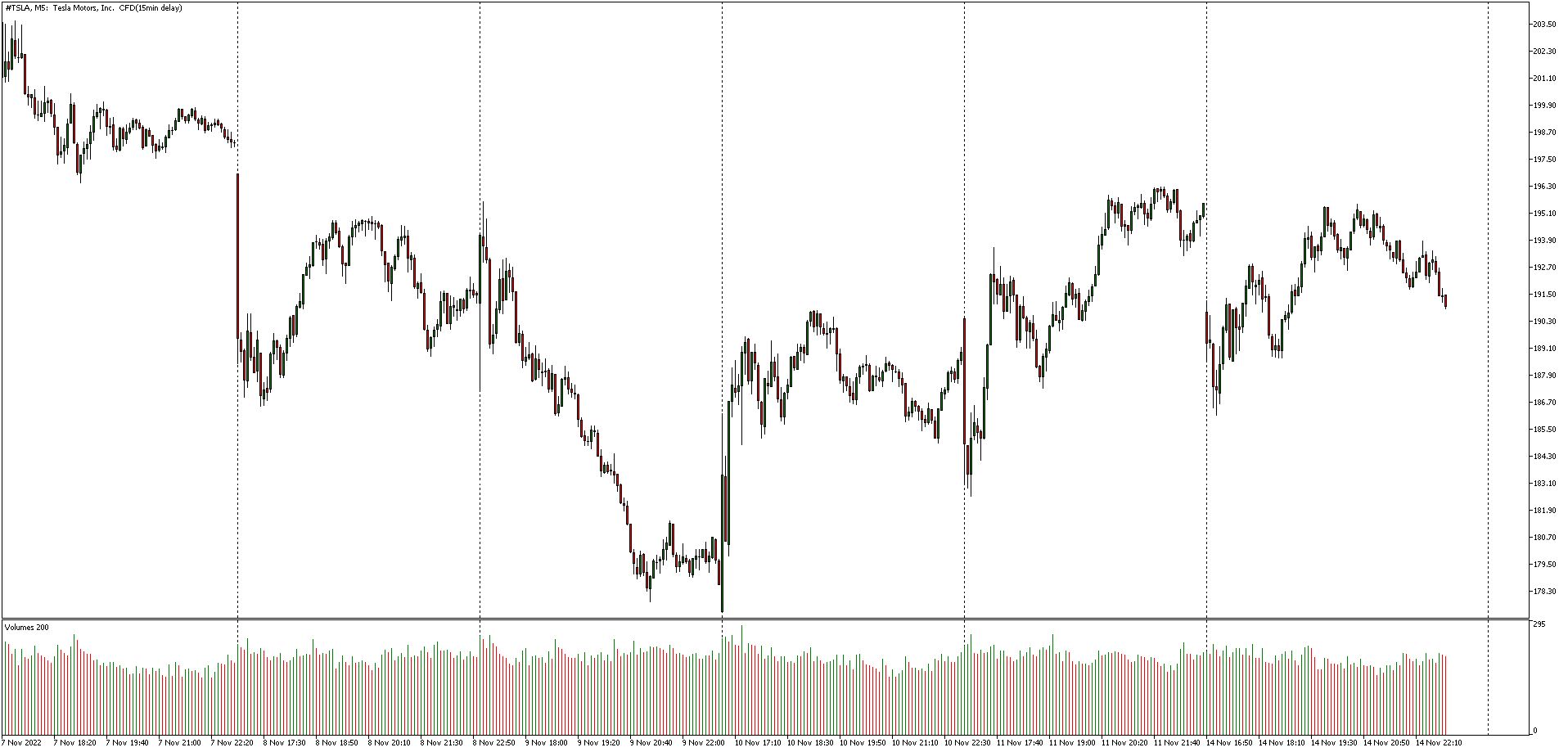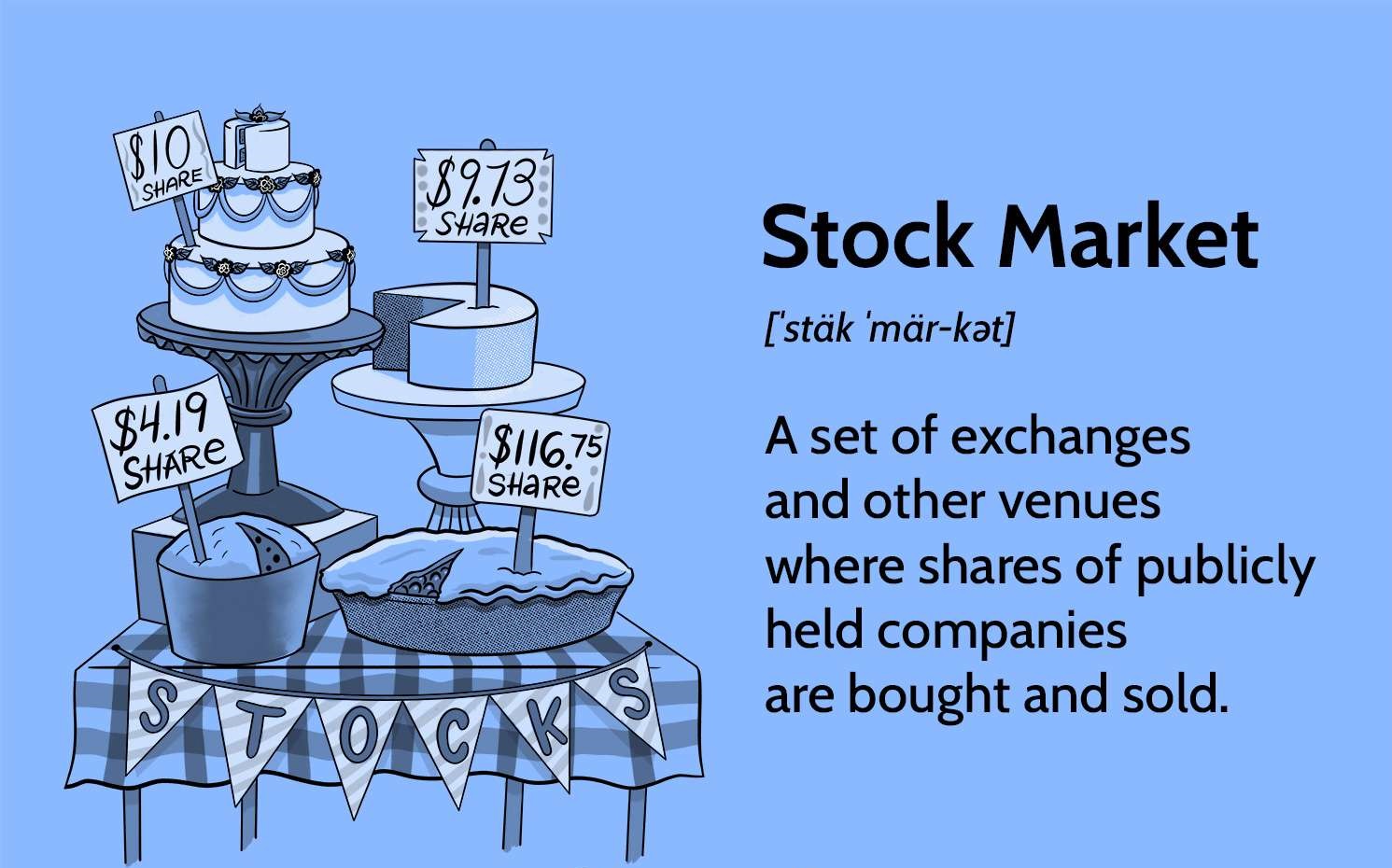Introduction
Trading stock has become a popular investment activity in recent years, offering individuals the opportunity to participate in the world of finance and potentially earn profits. But what exactly is trading stock? How does it work, and why do people engage in it?
At its core, trading stock refers to the buying and selling of company shares through a stock market. Stocks, also known as shares or equities, represent ownership in a specific company. When you buy a stock, you become a shareholder and have a claim on the company’s assets and earnings.
The primary goal of trading stock is to make a profit by buying stocks at a lower price and selling them at a higher price. It is a dynamic and fast-paced activity that requires knowledge, analysis, and strategic decision-making.
So why do people trade stocks? There are several reasons why individuals are drawn to stock trading:
- Potential for high returns: Trading stocks can offer significant returns on investment if done correctly. Positive market trends and successful trades can lead to substantial financial gains.
- Portfolio diversification: Investing in stocks allows individuals to diversify their investment portfolio, spreading the risk across different companies and sectors.
- Income generation: Some individuals rely on trading stocks as a source of income. By actively buying and selling stocks, they aim to generate capital gains and regular income through dividends.
- Passion for finance: Many people have a genuine interest in the financial market and enjoy the thrill and challenge of stock trading.
- Long-term wealth creation: Trading stocks can be a long-term investment strategy aimed at accumulating wealth over time. By carefully selecting stocks and holding onto them for an extended period, investors can potentially benefit from compounding returns.
Understanding how trading stock works is crucial for anyone interested in participating in the market. It involves various elements such as stock exchanges, trading platforms, buying and selling orders, and market analysis techniques. In the following sections, we will dive deeper into these concepts, exploring the different types of stock traders, the strategies they employ, and the risks and benefits associated with stock trading.
Whether you are a beginner looking to dip your toes into the stock market or an experienced trader seeking to expand your knowledge, this article will provide valuable insights into the world of trading stock.
What is Trading Stock?
Trading stock refers to the activity of buying and selling company shares in the stock market. When you become a stock trader, you essentially become a part-owner of the company whose shares you purchase. The stock market serves as a platform for individuals to trade these shares, facilitating transactions between buyers and sellers.
Shares, also known as stocks or equities, represent a portion of ownership in a specific company. By owning shares, you have the right to participate in the company’s growth and future profits. The value of shares fluctuates based on various factors, including the company’s performance, market conditions, and investor sentiment.
Stock trading occurs in stock exchanges, which are centralized marketplaces that bring together investors and companies. The most well-known stock exchanges include the New York Stock Exchange (NYSE), NASDAQ, London Stock Exchange, and Tokyo Stock Exchange.
There are two primary types of stock trading:
- Long-term investing: Long-term investors buy stocks with the intention to hold them for an extended period, often years or even decades. They focus on the fundamental analysis of a company, looking at factors such as its financial health, management, competitive position, and industry trends. Long-term investors aim to build wealth gradually over time, relying on the company’s growth and potential future dividends.
- Short-term trading: Short-term traders, also known as day traders or swing traders, capitalize on shorter-term price fluctuations to make quick profits. They rely on technical analysis tools and charts to identify patterns and trends in stock prices. Short-term trading often involves higher levels of risk and requires active monitoring of the market.
Trading stock involves various participants, including individual retail traders, institutional investors, and automated trading systems. Some traders engage in active trading, frequently buying and selling stocks, while others adopt a more passive approach, focusing on long-term investments.
It’s important to note that stock trading carries risk. The value of stocks can fluctuate significantly, and traders can experience losses if they make poor investment decisions or are affected by unforeseen market events. It’s essential to conduct thorough research, stay updated on news and market trends, and use risk management strategies to mitigate potential losses.
In the following sections, we will delve into the intricacies of stock trading, exploring the various strategies employed by traders, the risks and benefits associated with trading stocks, and the tools and platforms available for individuals to enter the exciting world of stock trading.
Why do People Trade Stocks?
Trading stocks has become a popular activity for individuals looking to grow their wealth and participate in the dynamic world of finance. People engage in stock trading for various reasons, driven by a combination of financial goals, personal interest, and the potential for significant returns. Here are some common motivations behind stock trading:
- Profit Potential: One of the primary reasons people trade stocks is the potential for high returns. By buying stocks at a lower price and selling them at a higher price, traders aim to generate profits. Successful stock trades in favorable market conditions can lead to substantial financial gains.
- Portfolio Diversification: Investing in stocks offers individuals the opportunity to diversify their investment portfolio. By spreading their investments across different companies, industries, and geographic regions, traders can reduce their risk exposure. Diversification helps protect against losses in a single stock or sector and promotes overall portfolio stability.
- Income Generation: Some people trade stocks as a means to generate regular income. In addition to potential capital gains from price appreciation, certain stocks pay dividends to their shareholders. Dividends are a portion of the company’s profits distributed to shareholders on a regular basis. Traders who focus on income generation often seek out stocks with consistent dividend payouts.
- Passion for Finance: Many individuals have a genuine interest in the financial market and find the world of stock trading exciting. They enjoy analyzing market trends, evaluating companies, and making informed investment decisions. For these individuals, stock trading provides a way to engage with the intricacies of the financial world and stay connected to the economy.
- Long-Term Wealth Creation: Trading stocks can be a long-term investment strategy aimed at accumulating wealth over time. By carefully selecting stocks and holding onto them for an extended period, investors can potentially benefit from compounding returns. The combination of capital appreciation and reinvested dividends can lead to significant wealth creation over the long run.
It’s important to note that stock trading comes with risks. The value of stocks can fluctuate, and traders may experience losses if they make poor investment decisions or are impacted by market volatility. It requires knowledge, research, and the ability to handle the emotional ups and downs of the market.
Whether individuals are pursuing financial gains, seeking to diversify their portfolios, or simply enjoy the challenge of stock trading, it is crucial to approach it with a solid understanding of the market, a disciplined investment approach, and a well-defined risk management strategy.
In the following sections, we will delve into the mechanics of stock trading, exploring how trading stock works, the types of stock traders, the strategies they employ, and the potential risks and benefits associated with this dynamic form of investment.
How does Trading Stock Work?
Trading stock involves a series of steps and processes that enable individuals to buy and sell shares of publicly-traded companies. Understanding how trading stock works is essential for anyone looking to participate in the stock market. Here’s a breakdown of the key components and mechanics involved:
- Stock Exchanges: Stock exchanges, such as the New York Stock Exchange (NYSE) and NASDAQ, serve as centralized marketplaces where buyers and sellers come together to trade stocks. These exchanges provide a regulated environment for transparent and efficient trading.
- Stock Symbols: Each publicly-traded company has a unique stock symbol, which serves as an identifier during trading. These symbols are typically a combination of letters and sometimes numbers. For example, Apple Inc. has the stock symbol “AAPL,” while Microsoft Corporation has the symbol “MSFT.”
- Buying and Selling Orders: Stock trading involves placing buying and selling orders. A buy order, also known as a bid order, indicates the price at which a trader is willing to buy a specific number of shares. Conversely, a sell order, also called an ask order, represents the price at which a trader is willing to sell a certain number of shares. These orders are executed when there is a match between the buying and selling prices.
- Market Orders and Limit Orders: Traders can place either market orders or limit orders. A market order instructs the broker to buy or sell shares at the current market price. Market orders are executed quickly but may not always be fulfilled at the desired price. On the other hand, limit orders specify the maximum buying price or the minimum selling price that a trader is willing to accept. These orders may take longer to execute but provide more control over the trade price.
- Bid and Ask Prices: When placing a trade, traders encounter two primary prices: the bid price and the ask price. The bid price represents the highest price a buyer is willing to pay for a share, while the ask price is the lowest price a seller is willing to accept. The difference between the bid and ask prices is known as the spread. The bid and ask prices of a stock constantly change based on supply and demand dynamics.
- Stock Market Orders: Stock market orders are categorized into different types, including market orders, limit orders, stop orders, and stop-limit orders. Each type of order serves a specific purpose and provides traders with various levels of control over their trades.
- Brokerage Accounts: To trade stocks, individuals need to open brokerage accounts with authorized brokerage firms. These accounts act as intermediaries between traders and the stock exchanges. Brokers execute trades, provide research and analysis tools, and offer access to various investment products.
- Market Data and Analysis: Successful stock trading requires staying informed about market trends, company news, and relevant economic and geopolitical factors. Traders rely on market data, financial statements, news updates, technical analysis tools, and other resources to make informed investment decisions.
It’s worth noting that stock trading is not limited to individual retail traders. Institutional investors, such as mutual funds, pension funds, and hedge funds, also actively participate in stock trading. Moreover, advancements in technology have enabled the development of automated trading systems and algorithmic trading, where computer programs execute trades based on predefined parameters.
Understanding the mechanics of trading stock is crucial for navigating the stock market effectively. By staying informed about market dynamics, utilizing trading tools, and making well-informed investment decisions, individuals can actively participate in this exciting and potentially rewarding form of investment.
Types of Stock Traders
Stock trading encompasses various approaches and strategies employed by different types of traders. Each trader has their own investment goals, time horizons, and risk tolerance levels. Here are some common types of stock traders:
- Day Traders: Day traders are highly active traders who aim to profit from short-term price fluctuations. They open and close positions within the same trading day, rarely holding stocks overnight. Day traders rely on technical analysis, chart patterns, and market indicators to make fast-paced trading decisions. This style of trading requires sharp analytical skills, discipline, and the ability to tolerate heightened risk.
- Swing Traders: Swing traders hold positions for a few days to several weeks, capitalizing on short-term price movements. They primarily rely on technical analysis but may also consider fundamental factors. Swing traders aim to capture larger price moves compared to day traders, while avoiding the risks associated with long-term investments. This style of trading requires patience, risk management skills, and the ability to spot potential trend reversals.
- Position Traders: Position traders have a longer time horizon, aiming to profit from major price trends over weeks, months, or even years. They often rely on a combination of technical and fundamental analysis, assessing the overall market conditions, industry trends, and company fundamentals. Position traders exhibit a more patient and hands-off approach, allowing their positions to ride out short-term market fluctuations in pursuit of larger gains.
- Scalpers: Scalpers focus on making small, quick profits from frequent trades. Their main objective is to capture small price differentials resulting from bid-ask spreads or market inefficiencies. Scalpers use high-speed trading platforms, advanced order types, and automated systems to rapidly execute trades. This style of trading requires precision, vigilance, and a deep understanding of the market microstructure.
- Algorithmic Traders: Algorithmic traders employ computer programs to automatically execute trades based on predefined conditions and algorithms. These algorithms can be designed to identify market patterns, execute trades at specific price levels, or follow quantitative models. Algorithmic trading aims to remove emotions from the trading process and take advantage of market inefficiencies with speed and precision.
- Investors: While not considered traditional “traders,” investors take a long-term perspective on stock ownership. They carefully select stocks based on fundamental analysis, company financials, and industry outlook. Investors aim to build wealth over time through capital appreciation and dividends, often holding stocks for years or even decades. Investors typically have a lower level of trading activity compared to other types of traders.
It’s worth noting that these categories are not mutually exclusive, and traders often incorporate elements from multiple trading styles into their strategies. Furthermore, the choice of trading style depends on an individual’s risk appetite, time commitment, financial goals, and personal preferences.
Regardless of the trading style adopted, all traders should strive to develop a trading plan, conduct thorough analysis, manage risks, and continuously refine their strategies. Understanding the various types of stock traders can provide insights into different approaches to trading and help individuals find the style that aligns best with their goals and abilities.
Strategies Used in Stock Trading
Stock trading involves the implementation of various strategies to identify opportunities, make informed investment decisions, and manage risks. Traders use a combination of analysis techniques and trading methods to navigate the complex and dynamic stock market. Here are some common strategies employed in stock trading:
- Fundamental Analysis: Fundamental analysis involves evaluating a company’s financial health, management team, competitive position, and industry outlook. Traders who employ this strategy analyze financial statements, company news, economic indicators, and other relevant information to determine the intrinsic value of a stock. This strategy aims to identify undervalued or overvalued stocks based on their fundamental characteristics.
- Technical Analysis: Technical analysis focuses on studying historical price and volume data to predict future price movements. Traders who use technical analysis examine charts, patterns, and indicators to identify trends, support and resistance levels, and potential entry and exit points. This strategy assumes that historical price patterns repeat themselves and that market psychology is reflected in the price and volume patterns.
- Momentum Trading: Momentum trading involves capitalizing on stocks that are already experiencing significant price movements. Traders who adopt this strategy aim to ride the wave of buying or selling pressure, looking for stocks with strong upward or downward momentum. Momentum traders often use technical indicators, such as moving averages or oscillators, to confirm trend strength before entering or exiting trades.
- Contrarian Investing: Contrarian investors go against the prevailing market sentiment, seeking opportunities in stocks that are undervalued or unloved by the market. They believe that markets overreact to news or events, leading to temporary price distortions. Contrarian investors typically look for stocks that they believe offer significant long-term potential but are currently out of favor or facing negative sentiment.
- Swing Trading: Swing traders aim to capture short-term price movements, usually holding positions for a few days to several weeks. They identify stocks that are in the midst of a prevailing trend and attempt to enter and exit positions at strategic points. Swing traders often use technical indicators, chart patterns, and market volatility to identify potential swing trading opportunities.
- Value Investing: Value investors seek to find stocks that they believe are trading below their intrinsic value. They focus on buying stocks that have solid fundamentals, a margin of safety, or potential catalysts that could drive the stock’s value higher. Value investors often disregard short-term market fluctuations and take a long-term perspective on stock ownership.
Each strategy has its own set of rules, indicators, and risk management techniques. It is important for traders to thoroughly understand their chosen strategy, conduct proper research, and adapt their approach as market conditions evolve.
Furthermore, it’s important to note that successful trading strategies often require a combination of analysis methods and risk management principles. Traders may choose to combine fundamental analysis with technical analysis or incorporate elements of different strategies into their trading approach. The key is to find a strategy that aligns with one’s trading goals, risk tolerance, and personal preferences.
It’s worth noting that no strategy guarantees profits, and trading involves risks that traders should be prepared to manage. Traders should continuously educate themselves, refine their strategies, and adapt to changing market conditions to maximize their chances of success.
Risks and Benefits of Trading Stock
Trading stocks offers both potential benefits and inherent risks. It is important for traders to understand and weigh these factors before participating in the stock market. Here are some key risks and benefits associated with trading stocks:
- Potential Benefits:
- Potential for High Returns: Trading stocks offers the opportunity for significant financial gains. Traders who are successful in their investment decisions can earn substantial profits, especially during periods of favorable market conditions.
- Portfolio Diversification: Investing in stocks allows individuals to diversify their investment portfolios. By spreading investments across different companies, sectors, and geographic regions, traders can reduce risk exposure and increase the potential for overall portfolio stability.
- Income Generation: Some stocks provide regular dividends to their shareholders, offering traders an additional source of income. Dividends are typically paid out of a company’s profits and are distributed to shareholders as a return on their investment.
- Potential Risks:
- Market Volatility: The stock market is characterized by fluctuations in share prices, and these price movements can be unpredictable and volatile. Traders may experience rapid changes in the value of their investments, which can result in potential financial losses.
- Loss of Capital: Investing in stocks carries the risk of loss of capital. If a trader makes poor investment decisions or the market experiences a downturn, the value of stocks can decline, leading to potential financial losses.
- Emotional Decision-Making: Emotional decision-making can negatively impact trading performance. Fear and greed can lead to impulsive trading decisions, which may result in poor investment outcomes. Successful traders learn to manage their emotions and make rational, objective decisions based on analysis and strategy.
- Information and Analysis: Trading stocks requires continuous information gathering and analysis. Traders need to stay updated on market trends, company news, economic data, and other factors that can influence stock prices. Insufficient or inaccurate information can lead to poor investment decisions.
- Liquidity Issues: Some stocks may have low trading volumes and limited liquidity, which can make it difficult to buy or sell shares at desired prices. Illiquid stocks may result in delays or higher transaction costs for traders.
It is essential for traders to carefully consider and understand these risks and benefits before engaging in stock trading. While the potential rewards can be enticing, traders should also be aware of the potential pitfalls that come with trading stocks.
Implementing risk management strategies is crucial for mitigating potential losses. Traders should set realistic goals, diversify their portfolios, use stop-loss orders to limit downside risk, and develop a disciplined approach to buying and selling stocks. Additionally, staying informed, conducting thorough research, and continually learning about the stock market can help traders make more informed and thoughtful investment decisions.
By understanding and managing the risks, traders can enhance their chances of capitalizing on the benefits that trading stocks can offer.
Tools and Platforms for Stock Trading
With advancements in technology, traders now have access to a variety of tools and platforms that facilitate stock trading. These tools and platforms offer features and functionalities that assist traders in conducting research, analyzing market trends, executing trades, and managing their portfolios. Here are some essential tools and platforms commonly used in stock trading:
- Trading Platforms: Trading platforms serve as the primary interface for traders to place orders and execute trades. These platforms provide real-time market data, order execution capabilities, and access to different exchanges. Examples of popular trading platforms include MetaTrader, thinkorswim, Interactive Brokers, and eToro.
- Charting and Technical Analysis Tools: Charting tools and technical analysis software enable traders to analyze historical price data and identify patterns, trends, and potential trading opportunities. These tools offer a wide range of technical indicators, customizable chart types, and drawing tools. Some widely used charting platforms include TradingView, MetaTrader, and StockCharts.com.
- Screeners and Scanners: Stock screeners and scanners allow traders to filter and sort stocks based on predefined criteria. These tools help traders narrow down their choices and identify stocks that match specific parameters, such as industry, market capitalization, price-to-earnings ratio, or volume. Popular screeners include Finviz, TradingView, and Yahoo Finance.
- News and Research Platforms: Access to timely and accurate information is crucial for making informed trading decisions. News platforms and research tools provide traders with the latest financial news, company updates, analyst recommendations, and financial reports. Examples include Bloomberg Terminal, Seeking Alpha, and CNBC.
- Mobile Trading Apps: Mobile trading apps enable traders to access their trading accounts, monitor their portfolios, and execute trades on mobile devices. These apps offer real-time market data, charting capabilities, and order placement features. Popular mobile trading apps include Robinhood, TD Ameritrade Mobile, and E*TRADE Mobile.
- Algorithmic Trading Systems: Algorithmic trading systems or automated trading software execute trades based on predefined rules and algorithms. These systems eliminate human emotions from trading decisions and enable high-speed trade execution. Popular algorithmic trading platforms include NinjaTrader, MetaTrader, and TradeStation.
- Simulated Trading Accounts: Simulated trading accounts, also known as demo accounts, allow traders to practice trading without risking real money. These accounts simulate real trading conditions, providing traders with an opportunity to test their strategies, analyze market behavior, and gain experience in a risk-free environment. Many brokerage firms offer simulated trading accounts.
It’s important for traders to choose tools and platforms that align with their specific needs, trading style, and level of expertise. Some platforms offer advanced features suitable for experienced traders, while others provide user-friendly interfaces for beginners.
While these tools and platforms can be powerful resources, it’s essential for traders to learn how to use them effectively. Traders should take the time to familiarize themselves with the functionalities of the tools, understand their limitations, and continuously improve their knowledge through trading education and practice.
Ultimately, the right combination of tools and platforms can enhance a trader’s ability to analyze the market, make informed decisions, and execute trades efficiently, contributing to their overall success in stock trading.
Key Terms and Concepts in Stock Trading
Stock trading involves a unique set of terms and concepts that traders need to understand in order to navigate the market effectively. Familiarizing oneself with these key terms is crucial for successful stock trading. Here are some important terms and concepts in stock trading:
- Stock: A stock, also known as a share or equity, represents ownership in a company. When traders buy stocks, they become partial owners of the company and have the potential to benefit from its earnings and growth.
- Ticker Symbol: A ticker symbol is a unique series of letters or characters used to identify a particular stock. Ticker symbols are used during stock trading to place orders and track the performance of individual stocks. For example, Apple Inc. has the ticker symbol “AAPL” and Microsoft Corporation is identified by “MSFT”.
- Bid Price and Ask Price: The bid price is the highest price a buyer is willing to pay for a stock, while the ask price is the lowest price a seller is willing to accept. The difference between the bid and ask prices is known as the spread.
- Market Order: A market order is an instruction to buy or sell a stock at the current market price. Market orders are usually executed quickly, but the execution price may differ slightly from the displayed price due to market fluctuations.
- Limit Order: A limit order is an instruction to buy or sell a stock at a specific price or better. Traders set a price limit for their order, and the order is executed only if the stock reaches the specified price or better.
- Stop Order (Stop-Loss Order): A stop order is an instruction to buy or sell a stock once it reaches a specific price called the stop price. Stop orders are often used as risk management tools to limit potential losses if a trade moves against the trader’s position.
- Volatility: Volatility refers to the degree of price fluctuations in a stock or the overall market. Stocks with high volatility can experience large price swings in a short period, offering potential opportunities for traders.
- Dividend: A dividend is a portion of a company’s profits distributed to its shareholders. Some stocks pay regular dividends, which provide an additional income stream for investors.
- Margin Trading: Margin trading allows traders to borrow funds from a broker to amplify their purchasing power and potentially increase their potential returns. However, margin trading also amplifies potential losses, and traders must meet specific requirements and closely monitor their positions.
- Market Order: Market orders are instructions to buy or sell a stock at the best available price in the market at the time of execution. These orders are generally executed quickly but may not be filled at the expected price if market conditions change rapidly.
These are just a few of the many terms and concepts that traders come across in stock trading. It is important for traders to continue to expand their knowledge and stay up to date with new terms and emerging trends in the market.
By understanding these key terms and concepts, traders can communicate effectively, make informed investment decisions, and navigate the stock market with confidence.
Conclusion
Trading stocks can be an exciting and potentially rewarding venture for those willing to put in the time, effort, and research required. It provides individuals with an opportunity to participate in the financial markets and potentially generate profits.
Throughout this article, we have explored the key aspects of trading stock, including what it entails, why people engage in it, how it works, different types of traders, strategies used, risks and benefits involved, and the tools and platforms available.
It is important for aspiring traders to remember that success in stock trading requires a combination of knowledge, skill, and discipline. Traders should educate themselves on the fundamentals of the stock market, continuously learn and adapt their strategies, and actively manage the risks associated with trading.
By understanding the fundamental concepts discussed and delving deeper into specific areas of interest, traders can develop a solid foundation for their stock trading journey. It is recommended that traders conduct thorough research, stay updated on market trends and news, leverage the available tools and platforms, and consider seeking guidance from experienced professionals or mentors.
As with any form of investment, stock trading involves risks, and there are no guarantees of profit. It is essential for traders to carefully consider their risk tolerance, set realistic expectations, and always practice proper risk management techniques.
Lastly, stock trading is a continuous learning process. Traders should strive to enhance their knowledge, refine their strategies, adapt to changing market conditions, and never stop exploring new opportunities for growth and success.
With dedication, perseverance, and a commitment to ongoing learning, traders can maximize their chances of achieving their financial goals and thrive in the dynamic world of stock trading.

























